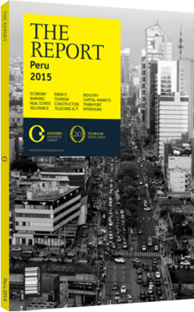Piero Ghezzi, Minister of Production: Interview

Interview: Piero Ghezzi
What is the aim of the Industry Diversification Plan?
PIERRO GHEZZI: The goal of the plan is to reactivate the economy and return to the average growth rate from 2005 to 2012, which was 7%. The central bank estimates that the economy has the potential to grow 5% for 2015, and the objective of the new plan is to add two percentage points to that figure. Furthermore, research is being conducted to help pinpoint the sectors with the most potential to become new drivers for increasing exports and reducing the trade deficit, which is estimated at approximately $1.5bn for 2014.
The focus will not be on giving fiscal incentives or lowering taxation, but rather on providing everything from infrastructure to the right legal framework in order to ensure efficient and harmonious relations between sectors. That said, the focus should not be on a limited number of sectors, as we then risk making the mistake of having the economy dependent on factors that are out of our control, such as international commodity prices. By 2016 we expect to have visible results from the plan on a macroeconomic level.
How can Peru’s labour productivity be improved?
GHEZZI: Lima, and indeed the country as a whole, have low productivity, starting with land prices that reduce competitiveness. This issue is being targeted with the promotion of industrial parks to help geographically reorganise the industrial sector, thereby improving productivity and lowering logistic costs. There have been 19 such parks in the past, however none of them have been successful. One of the parks currently being promoted is Lurin, south of Lima, which has good access to the airport and the port.
The other main issue is that productivity is inconsistent, not only between the capital and the provinces but also among the sectors. Some industries such as mining and fisheries have relatively high productivity, but others are far from reaching their full potential. Most of the productivity problems stem from small and medium-sized enterprises and informal businesses. The best strategy to improve their productivity is to educate them on upgrading their technology, which will also work as a tool for formalisation.
What can be done to improve and encourage the country’s culture of innovation?
GHEZZI: As far as research and innovation are concerned, Peru is a laggard in a region that already lacks a culture of innovation. The fact that there are only 12 official centres for technological innovation – five public and seven private, and no new centres in the past 12 years – is proof of the lack of interest in innovation.
However, by 2016 there will be 47 centres spread across the country, each focusing on a different industry with regional potential. There is also a fund of $200m from the Development Finance Corporation to promote innovation programmes. The goal is for the central and local governments to promote innovation by acting as a nexus between private companies and universities and technological institutes.
Examples from other countries show that subsidies are necessary to promote innovation because they are long-term investments that do not have guaranteed returns. The $200m fund is being administered by the Fund for Innovation, Science and Technology, which will try to ensure that the funds are used for programmes and projects with innovative output.
Bureaucratic red tape is an obstacle to boosting productivity and competitiveness. What can be done to streamline bureaucratic processes?
GHEZZI: Bureaucracy is one the main problems in the country and it directly affects competitiveness. To tackle it there must be structural change, not only at the Ministry of Production but in all public institutions. This also includes regional governments, which administer 70% of all public spending, and therefore deal most directly with the private sector. Bureaucracy has been one of the main channels for corruption and has created a negative image for potential investors in Peru.
You have reached the limit of premium articles you can view for free.
Choose from the options below to purchase print or digital editions of our Reports. You can also purchase a website subscription giving you unlimited access to all of our Reports online for 12 months.
If you have already purchased this Report or have a website subscription, please login to continue.

